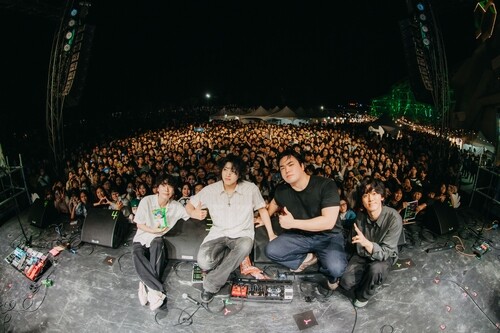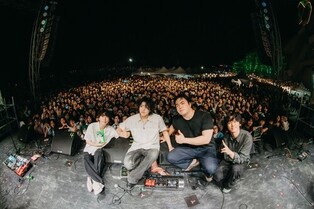*Editor’s note: K-VIBE invites experts from various K-culture sectors to share their extraordinary discovery about the Korean culture.
Kim Wolf's 'K-Geography' Story: The South Sea Seen from a Yacht
By Kim Wolf (Photographer, marathon runner)
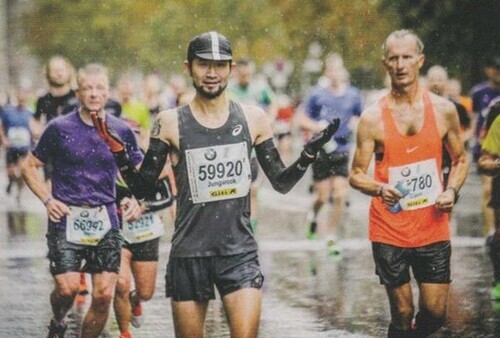
"On the slope of Baesan, gazing at Suyeong Bay~♪"
This is a line from my elementary school’s anthem. I spent my childhood and most of my school years in Busan. For me, the sea is another symbol of who I am. That song quietly holds the landscape of the city where I grew up.
I was raised in a hillside neighborhood overlooking the waters in front of the Suyeong Bay Yacht Center, which was built for the sailing events of the 1988 Seoul Olympics. I spent my early years in a 12th-floor apartment at the top of Baesan.
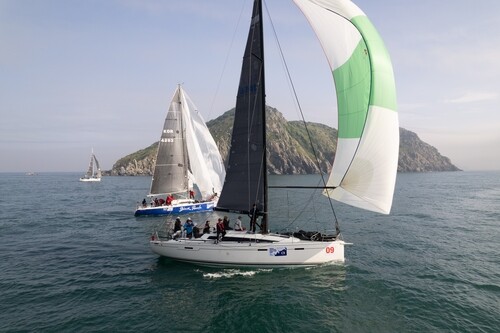 |
| ▲ This photo provided by the author shows the participants of the Namhaean Cup International Yacht Race. (PHOTO NOT FOR SALE) (Yonhap) |
From that mountaintop, shaped like an upturned teacup, the sea changed its color dozens of times a day. Sometimes it sparkled so brightly that I had to squint. It felt less like a window view and more like a portal to another world.
And so, I grew up watching the sea.
My father's interest in yachting began by chance. One day, while passing near Suyeong Bay, he saw a small sailboat quietly sailing with the wind. From then on, he would go sailing every weekend on a one- or two-person dinghy, which my mother named Sandeul.
Whether she meant a harmony of mountains (san) and fields (deul), or the word sandeulbaram (gentle breeze), I don’t know—but I do know my mother didn’t much enjoy sailing. Instead, my younger sibling and I would always join him. My sibling quickly learned to balance on the boat, while I found myself drawn not to the water but to the scenery. With a camera in hand, I began taking pictures of the sea, and gradually grew closer to it.
Looking at Busan from the sea, the city felt unfamiliar and mysterious. Haeundae, Gwangalli—those familiar names had new faces from that perspective. Depending on the angle, the land showed thousands of different expressions, each of them beautiful. Those memories stayed with me and ultimately led me to photography.
I wanted to hold on to the landscape.
Since then, my gaze has always turned to the sea. A call from my middle school sailing coach brought me back to the yacht center, and since 2006, I’ve been photographing yacht races. Over time, the number of ports I’ve visited became too many to count, and through my lens, I captured the hands of countless sailors and their silhouettes atop the waves.
What is yachting? It’s more than just sailing. It’s reading the wind, riding the waves, and continuously making decisions to adapt to the ever-changing forces of nature. As they say, yachting has more rules than any other sport—each step on the sea holds countless variables.
Even when it rains, when waves crash violently, and when the wind changes direction without warning, someone always sails forward. The sea never shows the same face twice. And in that sea, I press the shutter with both caution and awe. Capturing a yacht race may be, in a way, an attempt to trace the invisible presence of the wind.
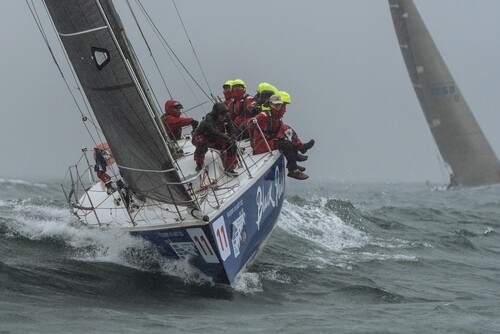 |
| ▲ This photo provided by the author shows the participants of the Namhaean Cup International Yacht Race. (PHOTO NOT FOR SALE) (Yonhap) |
These photos were taken during the Korea Southern Coast Cup. Now in its sixth year, the race was held from July 12 to 15. It’s one of the few long-distance yacht races in Korea, running from Busan to Tongyeong to Yeosu.
On 30- to 40-foot yachts, teams sail together for days—and there, once again, I faced the sea.
Korea is a country of islands. One could even say it's an island nation, given the sheer number of inhabited isles. Especially along the South Sea, countless nameless islands exist, hiding landscapes that are invisible from land. It’s a world you can’t reach by car—only the wind can take you there. I was in the midst of recording that world. Lonely Planet, a global travel magazine, has featured detailed articles on Korea’s islands multiple times.
This year’s race took place amid monsoon rains and strong winds. For photographers, days like these are often more valuable than clear skies. With nowhere to take shelter, I held steady and pressed the shutter out on the open sea.
That moment—facing fear and still pressing the shutter—is my own form of sailing. Out on the water, I’ve never been especially brave. I’ve been anxious and cautious. Maybe that’s why I think about the sea more often. Perhaps it's my way of soothing myself—facing the chaos hidden beneath deep waters. That, too, is sailing.
There’s no such thing as a perfect day. You need some wind, but not too much. High waves are dangerous, and sea fog can make it impossible to see ahead. And yet, the photos still get taken.
Because the sea is an imperfect world, a single photo captured within it can feel like a pure shard of hope. Sometimes my gear breaks, I get soaked, and I’m exhausted from the harsh weather. But the more difficult the day, the richer the stories it leaves behind.
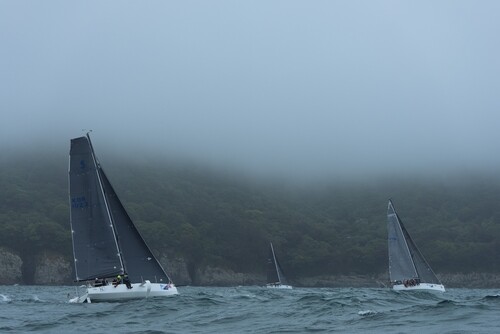 |
| ▲ This photo provided by the author shows the participants of the Namhaean Cup International Yacht Race. (PHOTO NOT FOR SALE) (Yonhap) |
Even today, I am with people crossing the sea. People from different walks of life come aboard one boat called a yacht, following the wind toward a shared destination. Watching them, I deeply feel that this journey holds meaning far beyond sport.
No matter how many times the waves break, they always return to a calm ripple. The islands, too, are always there—seemingly on the verge of disappearing, yet never truly gone. Among those things that seem fleeting but are never lost, I quietly found my focus.
And once again, I tried to read the direction of the wind. Even after this voyage ends, I will prepare for the next. That’s how I have become someone who reads the wind. A self gifted to me by the sea.
(C) Yonhap News Agency. All Rights Reserved


















![[풀영상] 디즈니+ '메이드 인 코리아' 제작발표회|현빈 Hyunbin·정우성 Jung Woosung·우도환·서은수·원지안·정성일·강길우·노재원·박용우|Made In Korea](/news/data/20251215/p179554206856695_165_h.jpg)






